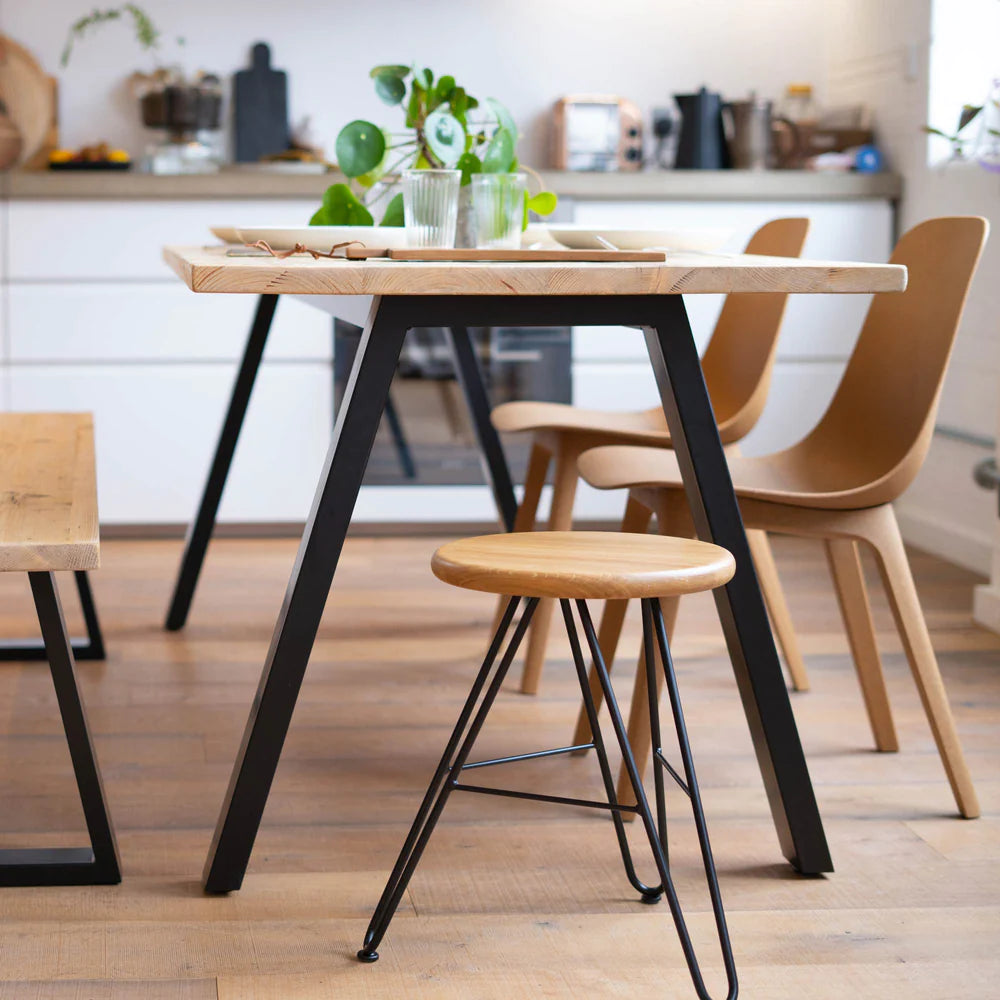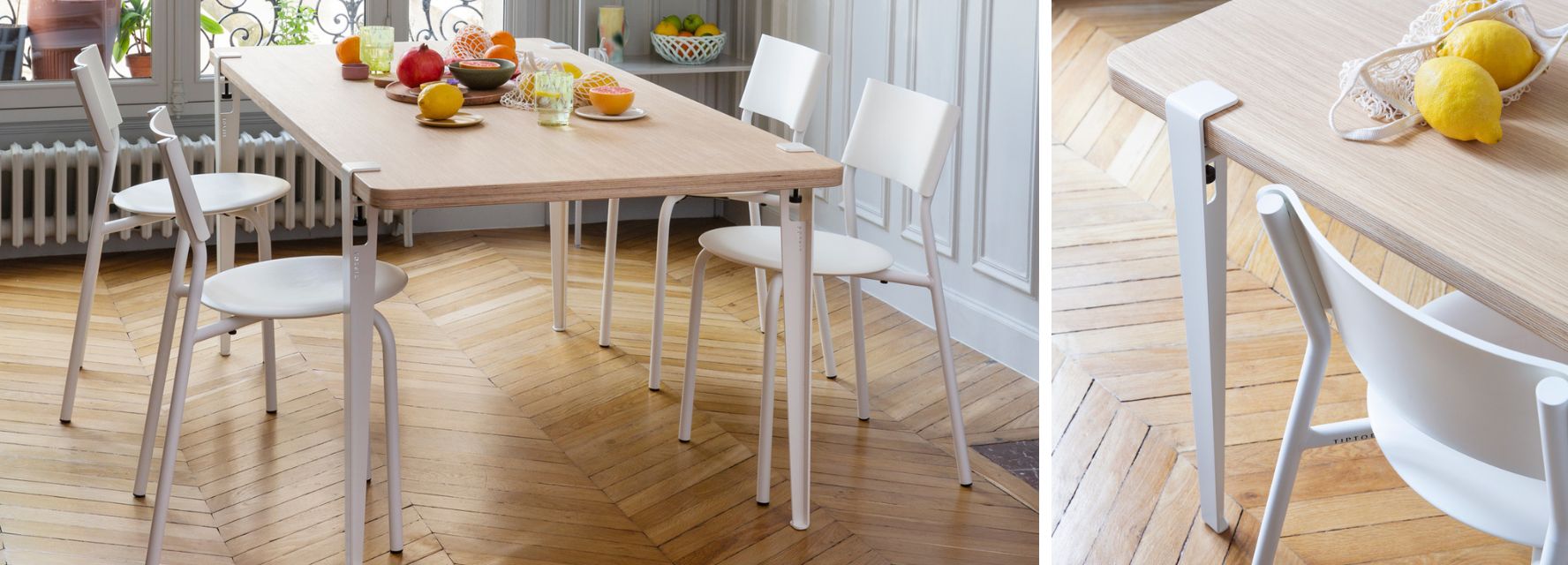Enhance Your Dining Room with Unique and Modern Dining Room Table Legs
Enhance Your Dining Room with Unique and Modern Dining Room Table Legs
Blog Article
Just How to Pick the Perfect Dining Room Table Legs for Your Home Design
Picking the perfect dining space table legs is a nuanced procedure that calls for careful consideration of different aspects, including your area restraints, visual choices, and practical needs. The interplay between designs, dimensions, and materials can substantially affect the atmosphere of your dining area, making it important to approach this choice methodically. As you contemplate the myriad choices readily available, it comes to be clear that the right choice extends past mere appearance; it can improve your total dining experience. What elements should you prioritize to ensure your selection enhances your home's one-of-a-kind personality?
Assess Your Eating Area
Evaluating your eating area is important for selecting the right table legs that enhance both looks and performance. Begin by gauging the dimensions of your eating area, consisting of ceiling height, flooring area, and proximity to various other furniture. This info will certainly assist determine the proper size and elevation of your table, which directly affects the option of table legs.
Next, think about the design and layout of your dining room. For example, an open-concept style might profit from table legs that offer visual lightness, such as slender steel or acrylic alternatives. Conversely, a much more standard setting might require strong wooden legs that supply a sense of permanence.
Review the existing shade scheme and materials in your eating area. Integrating the table legs with these aspects produces a natural appearance that improves the total design. In addition, consider the performance called for in your area. If you regularly host huge events, take into consideration legs that offer additional assistance and stability.
Eventually, a thorough evaluation of your dining area will certainly lead you in making a notified choice, making sure that your table legs not only improve the visual charm yet also offer functional purposes.
Consider Your Style Preferences
When choosing dining-room table legs, it is necessary to review your individual style choices, as they significantly influence the general visual of your eating space. Your choice of table legs can either complement or contrast with existing design, making it important to straighten them with your recommended interior design theme.
If your home leans towards a modern-day aesthetic, think about smooth steel or minimalist wooden legs that supply a clean, uncluttered look. For an extra conventional strategy, luxuriant wood legs with complex makings can include a touch of sophistication and class. Industrial designs gain from robust, basic materials such as redeemed timber and steel combinations, mirroring a sturdy beauty.
In addition, farmhouse and rustic designs commonly prefer sturdy, beefy legs that stimulate a sense of warmth and convenience. Alternatively, if your decor is diverse, you might choose unconventional forms or a mix of products to create aesthetic interest.

Evaluate Product Options
The choice of product for eating area table legs plays a critical duty in both durability and aesthetic charm. Usual products include wood, steel, and composite options, each offering distinctive features that can influence the overall look and durability of your table.
Timber is a traditional option, recognized for its heat and flexibility. Woods like oak and walnut give extraordinary strength and can be ended up in different discolorations to match any style. Softwoods like yearn are extra prone to scrapes and dents, making them much less perfect for high-traffic locations.
Steel legs, commonly crafted from steel or light weight aluminum, radiate modernity and industrial beauty. They are extremely durable and immune to put on, making them suitable for households with children or constant events (dining room table legs). In addition, steel can anonymous be ended up in different colors, boosting the personalization possibilities
Composite products, such as MDF or laminate, deal affordability and varied designs. While usually much less long lasting than solid timber or steel, they can still give a fashionable appearance and are commonly very easy to maintain.
Ultimately, the material you choose must align with your lifestyle, visual choices, and the level of usage your eating table will experience.
Determine Height and Dimension
Picking the appropriate height and dimension for your dining-room table is vital for both performance and convenience. The conventional height for eating tables usually ranges from 28 to 30 inches, enabling adequate legroom for many people when seated. Nonetheless, it is essential to consider the measurements of your dining room and the kinds of chairs you intend to make use of.

Furthermore, take into consideration the percentages of your eating space. A bigger table in a sizable area can develop a grand ambiance, while a smaller sized table works well in more intimate setups. Ultimately, the ideal height and dimension will balance with your total decoration and enhance the eating experience for you and your guests.
Explore Modification Possibilities

Furthermore, the design of the legs can be tailored to fit different styles, such as rustic, modern-day, or commercial. Tapered legs can stimulate a mid-century contemporary feeling, while chunky, block-style legs might resonate with traditional or farmhouse decoration.
Property owners can additionally check out shade surfaces, from all-natural wood discolorations to paint, allowing them to match or contrast with the table top and surrounding style.
Furthermore, leg elevation can be gotten used to suit particular seating setups or personal choices, enhancing both comfort and capability.
Finally, one-of-a-kind embellishments, such as makings or decorative brackets, can better personalize the table legs, making the dining experience not simply a meal however a declaration item in the home. By thinking about these modification options, property owners can develop an eating room table that genuinely mirrors their uniqueness.
Conclusion
Choosing the suitable eating area table legs needs cautious consideration of numerous variables, consisting of the measurements of the dining area, style choices, material longevity, and wanted elevation. Modification options better boost the capacity to accomplish a natural aesthetic that complements the overall design. By systematically examining these components, homeowners can ensure that the chosen table legs not only satisfy practical demands however likewise add positively to the dining experience and atmosphere of the home.
Choosing the optimal eating space table legs is a nuanced process that needs cautious consideration of various elements, including your space constraints, visual choices, and sensible demands.Examining your dining area is important for selecting the right table legs that complement both visual appeals and functionality.When determining size, gauge the location where the table will be placed to guarantee it fits pleasantly, enabling for at least 36 inches of clearance around the table for easy activity. A bigger table in a roomy area can develop a grand atmosphere, while a smaller table functions well in even more intimate settings.Picking the excellent dining room table legs calls for cautious consideration of numerous aspects, including the measurements of the dining space, design preferences, product toughness, and desired elevation.
Report this page